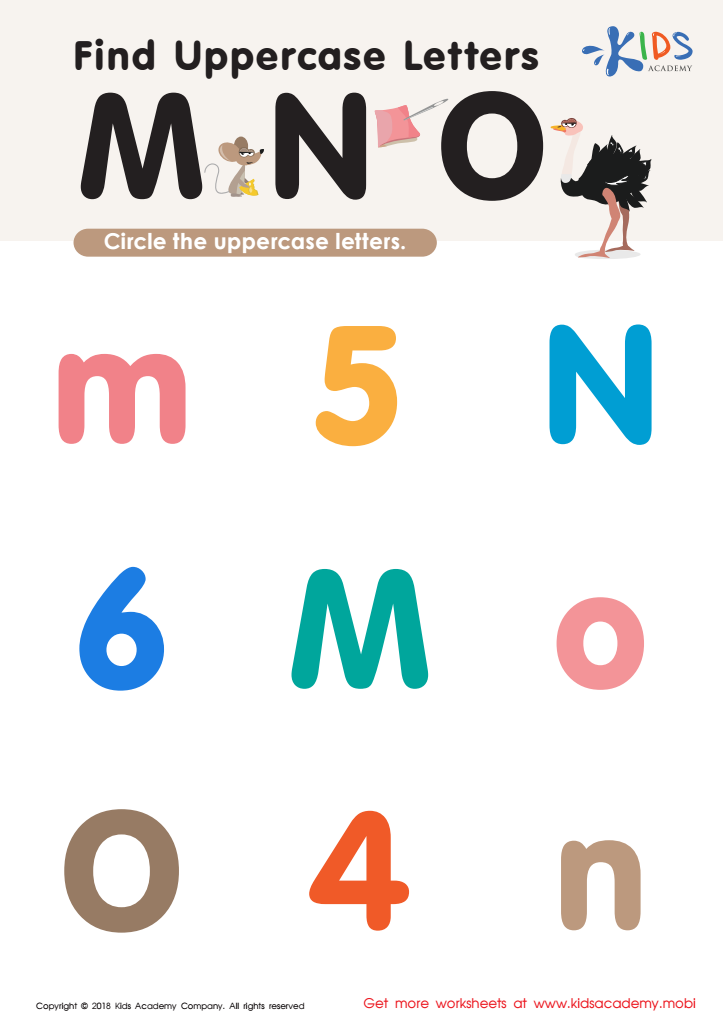Uppercase identification Letter Recognition Worksheets for Ages 6-7
5 filtered results
-
From - To
Discover our engaging Uppercase Identification Letter Recognition Worksheets, designed specifically for children aged 6-7! These worksheets aim to enhance your child's ability to recognize and distinguish uppercase letters in a fun and interactive way. Each activity is crafted to support key literacy skills, fostering a strong foundation for reading and writing. With colorful illustrations and child-friendly exercises, your young learner will enjoy identifying letters while developing essential cognitive abilities. Perfect for homeschoolers or classroom settings, these worksheets make learning an enjoyable experience. Help your child excel in their alphabet knowledge today with our comprehensive resources!


Find Uppercase Letters Worksheet


Find Uppercase Letters J, K, and L Worksheet


Find Uppercase Letters A, B, and C Worksheet


Find Uppercase Letters V, W, X Worksheet


Find Uppercase Letters M, N, and O Worksheet
Uppercase letter identification is a fundamental skill for children aged 6-7, serving as a foundation for various literacy skills. At this age, children are typically transitioning from learning the basics of the alphabet to reading and writing more fluently. Recognizing uppercase letters is crucial because they are prevalent in written communication, including proper nouns, signs, and the beginning of sentences. Mastery of uppercase letter recognition enhances a child’s ability to decode words, which is essential for reading proficiency.
Moreover, recognizing uppercase letters helps children distinguish between different letter forms, such as uppercase and lowercase, fostering independent reading and writing skills. This proficiency builds confidence as children begin to encounter new texts. For teachers and parents, encouraging uppercase letter recognition can be easily integrated into their daily routines, through fun activities like letter scavenger hunts or interactive games.
Additionally, early intervention in letter recognition can address potential learning challenges and set a strong literacy foundation. Ultimately, when parents and teachers prioritize uppercase letter identification, they contribute significantly to a child’s overall academic success and instill a love for reading that can last a lifetime. Literacy skills are crucial to children’s development, and recognizing uppercase letters plays a critical role in that journey.
 Assign to My Students
Assign to My Students




















